Egon Schiele: A Singular Style
Over 100 years after his early death, Egon Schiele's tortured work has never been so in touch with the spirit of the times, marked by uncomplicated egotism and a fascinating relationship with existential unease.
A protégé of Gustav Klimt and following in the stylistic footsteps of the Viennese Secession, Symbolism, and Expressionism, Egon Schiele is now closer to Jean-Michel Basquiat in his painful experience of art, marked by existential unease. Like Brooklyn’s ‘radiant child’, Schiele had a controversial if dazzling career cut short at the age of 28 and his works attract an ever-growing modern audience.
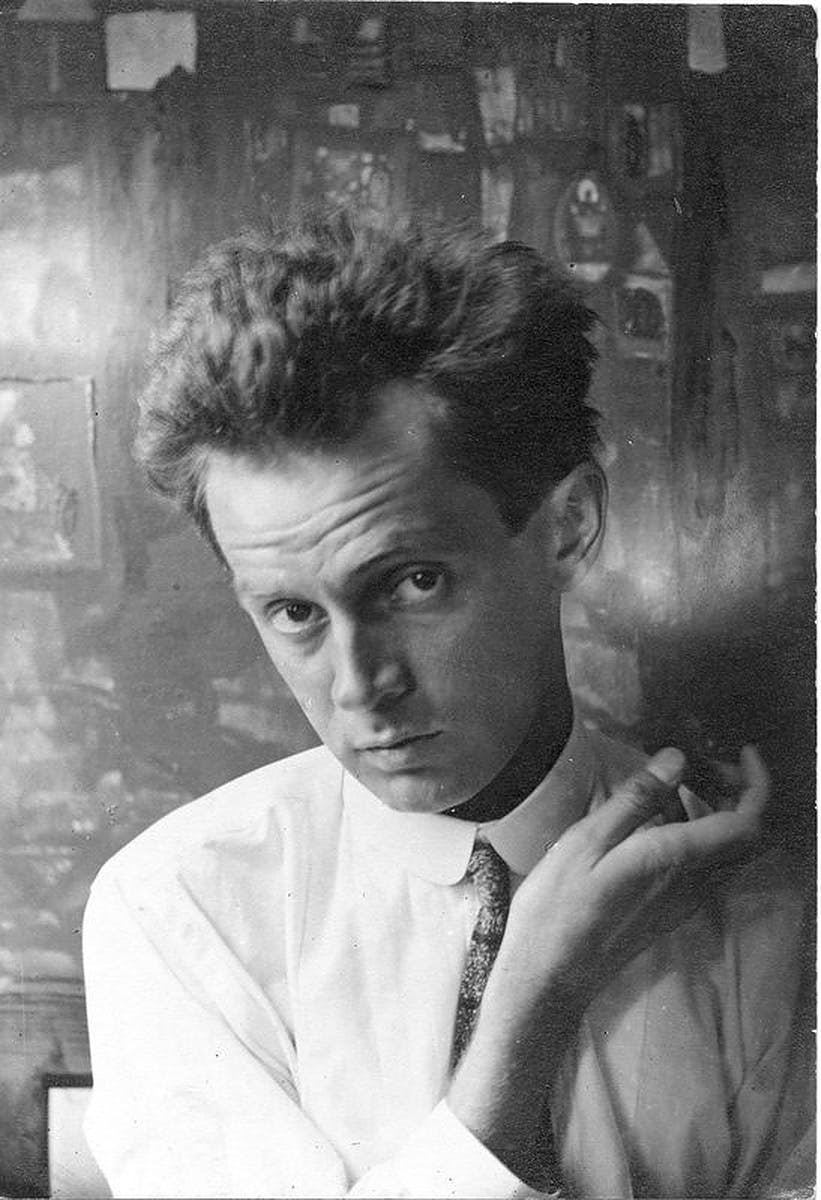
Although he did not attain real success during his lifetime and his personal life was tinged by scandal, Schiele was ahead of his time in the romantic and Freudian Vienna of the early 20th century. Few artists have painted so many self-portraits over such a short production period, and he was amazingly prolific. Many of his self-portraits depict him as squinting, perhaps a kind of nod to his family name (in German, the verb schielen means ‘squint’). His works spans across some 300 paintings, more than 3,000 drawings, about 20 engravings and lithographs, and numerous sculptures. In this, and in many other respects, his singular style and frequent self-portraits find an echo in the selfie-culture of the 21st century.

Schiele was born on June 12, 1890 in Tulln, Austria. His father was the station master of the Tulln railway station, and his grandfather was a pioneer in constructing the Austrian railways. His father died when he was 15, and he was placed in the care of an uncle, himself an engineer and railway inspector who began planning out a similar career arc for the young Schiele. This future was narrowly avoided, however, as Schiele had a life-long interest in painting. With the support of his mother and her more Bohemian side of the family, as well as a drawing teacher at the Klosterneuburg high school, he entered the Vienna Academy of Fine Arts in 1906.
Related: The 10 Most Scandalous Artworks
The early losses of his father and his older sister had a profound impact on the young artist, whose vision of the world was darkening and whose relationship to authority and conservatism was becoming more radical. His professor at the Academy, Christian Griepenkerl, was left to deal with the brunt of these issues. Schiele left the academy early, along with other dissatisfied students such as Anton Peschka (who would later become his brother-in-law), Anton Faistauer, and Robin Christian Andersen, to form Neukunstgruppe (Group for a New Art) with the support of the writer and art critic Arthur Roessler.
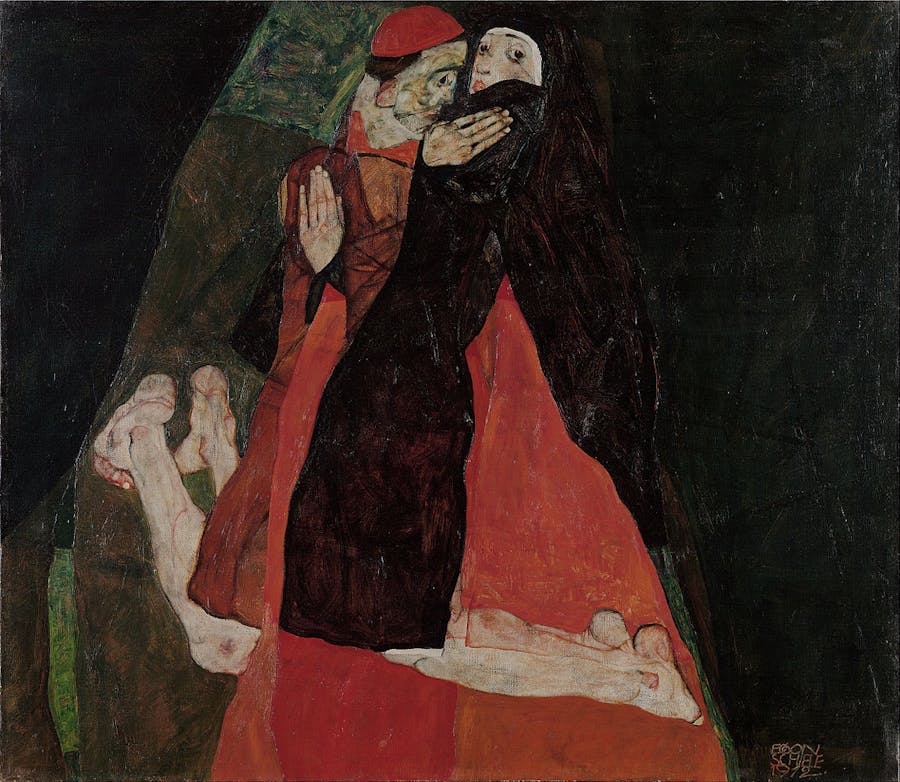
Related: Gustav Klimt: Artist of Emotion and Eroticism
The event that truly shaped Schiele’s career, however, was meeting Gustav Klimt in 1907. Klimt was famous as the leader of the Viennese Secession, a movement close to Art Nouveau and German Jugendstil, and these styles would have a clear and immediate impact on Schiele. He was then only 17 and had found a mentor in the 45-year-old Klimt. His 1912 work The Cardinal and the Nun (Caress) clearly references Klimt’s The Kiss, indicating Schiele’s long-standing devotion and admiration.
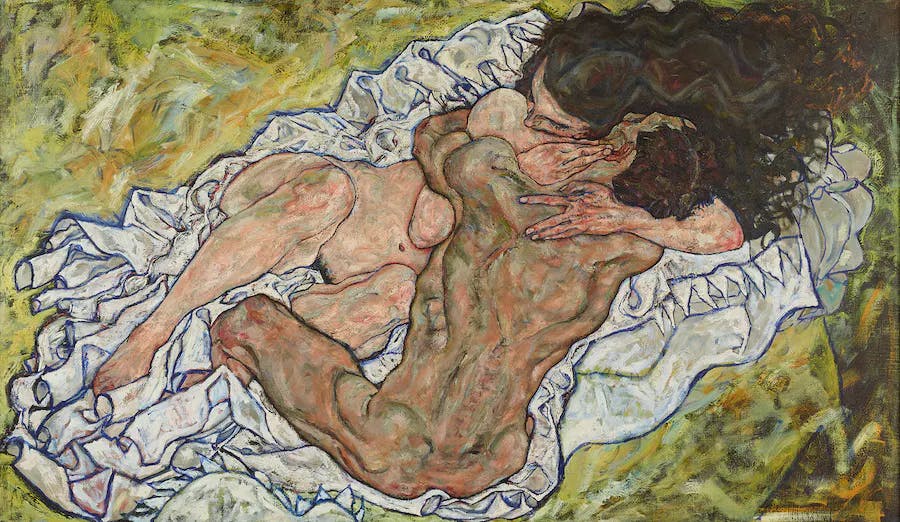
In 1909, Schiele participated in his first public exhibition in Klosterneuburg, where his works were noticed by critics, then he soon appeared in the Vienna International Fine Arts Exhibition where he made his first contacts with collectors and publishers. Soon after, he joined the Wiener Werkstätte (Viennese Art Studio) of the architect and designer Josef Hoffmann, under whose banner he received so many commissions that he was unable to fulfill them all. From 1911 onwards Schiele distanced himself from existent movements, tending to stylistically isolate himself. Through portraits and self-portraits, distorted and emaciated faces and bodies began to reveal the violence of his desire to live and create, while at the same time displaying a certain existential unease. His figures were often provocative and somewhat disturbing nudes, frequently leading his work to be labeled as pornographic or the product of an unstable mind.
Related: Five Centuries of the Nude in Painting
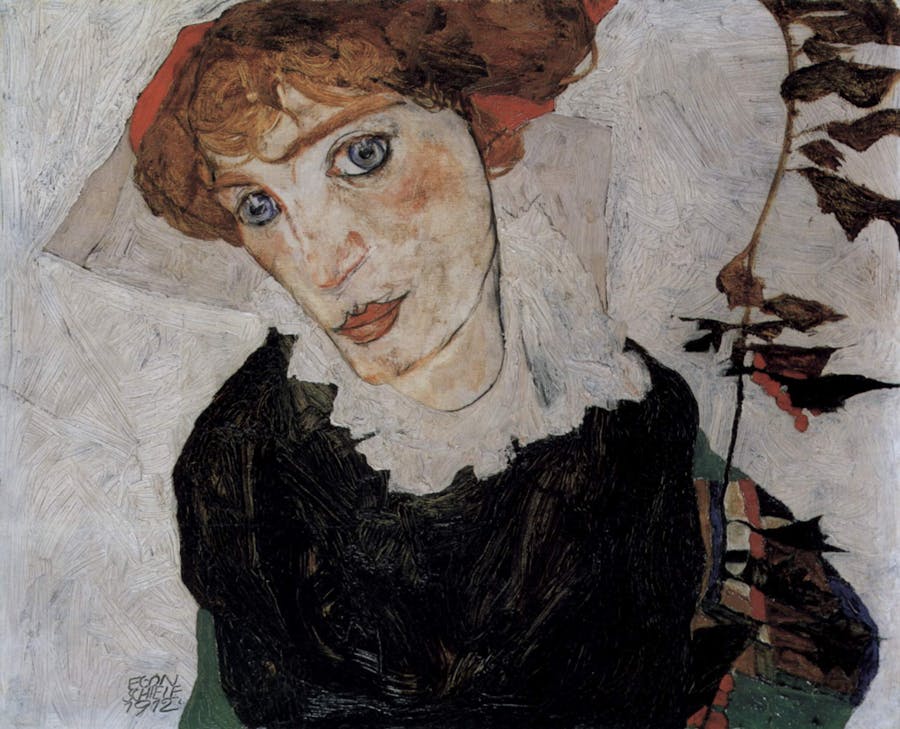
Walburga ‘Wally’ Neuzil, Schiele’s partner and muse, moved with him to Krumlov, in South Bohemia, where he found a suitable workshop to produce large-format pieces. The locals, however, were shocked by the erotic nature of Schiele’s art, and the couple soon moved back to Vienna. Upon his return to the outskirts of Vienna, Schiele was soon arrested for having seducing a girl below the age of consent, and more than a hundred drawings were seized from his studio. Although the charges of abduction and seduction were dropped, he was found guilty of displaying erotica in a place where children could see it and served 24 days in jail.
Related: On and Off the Canvas: Art's Most Famous Muses
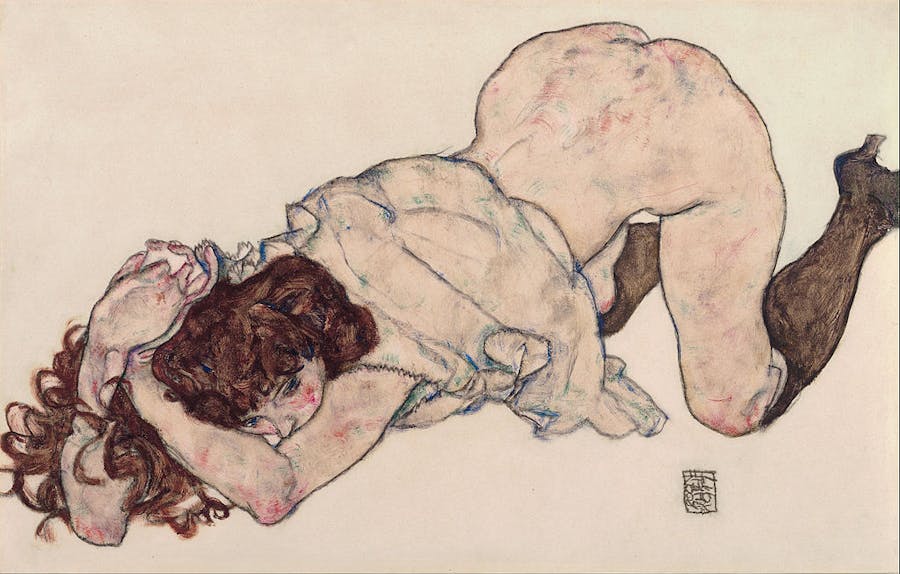
Despite his dubious local reputation, Schiele’s talent gained enthusiastic admirers in Brussels, Paris and Rome – cities, perhaps, that were far enough away to avoid stories of the artist’s misconduct. Schiele married his neighbor Edith Arms on June 17, 1915, abandoning Wally Neuzil in favor of a more typically ‘advantageous’ match. In February 1918, he painted Klimt’s deathbed portrait and took his place presiding over the organization of the 49th Viennese Secession exhibition, the ultimate tribute to his mentor. Schiele himself died during the Spanish flu epidemic later that year on October 31, three days after his wife.
Want articles like this straight to your inbox? Subscribe to our free newsletter!
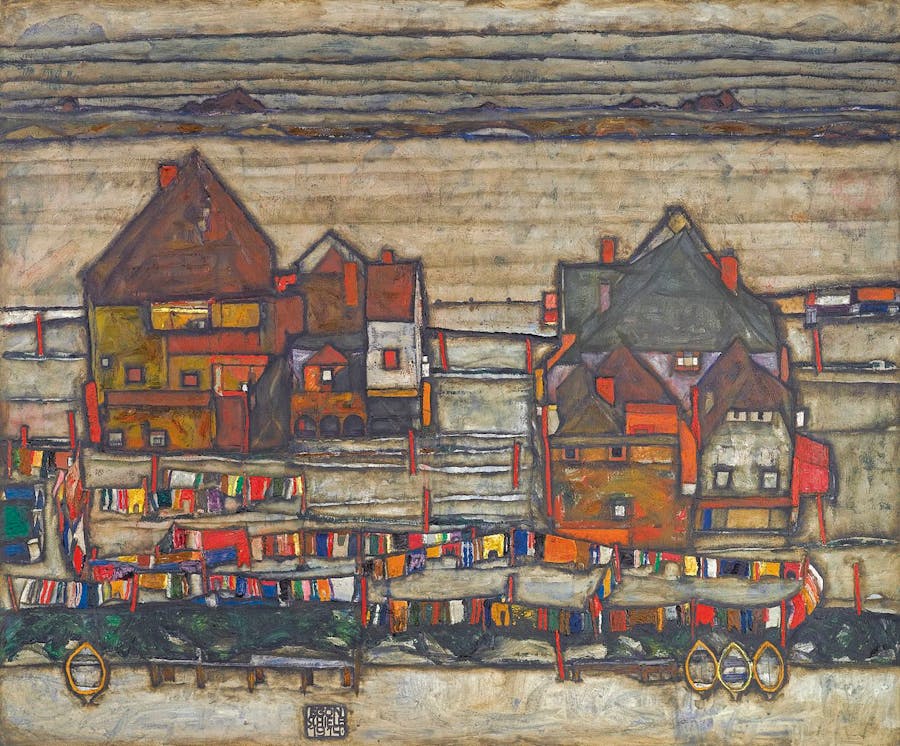
Schiele left a dark and original body of work that cannot be reduced to the erotic or violent postures of his characters, nor to a simple celebration of the self as an individual. The assertive lines of his drawing and the abstracted and disarticulated movement of his figures lend his work modernity. Perhaps surprisingly, the sales record of this self-portrait specialist is currently linked to one of his landscapes. Häuser mit bunter Wäsche (Houses with Colored Laundry) was painted in 1914 and sold by Sotheby’s London on June 21, 2011 for £24.6 million. Today one may see Schiele’s works at the Belvedere Palace or the Leopold Museum in Vienna; taken together, the two museums have the largest collection of his art anywhere in the world.


